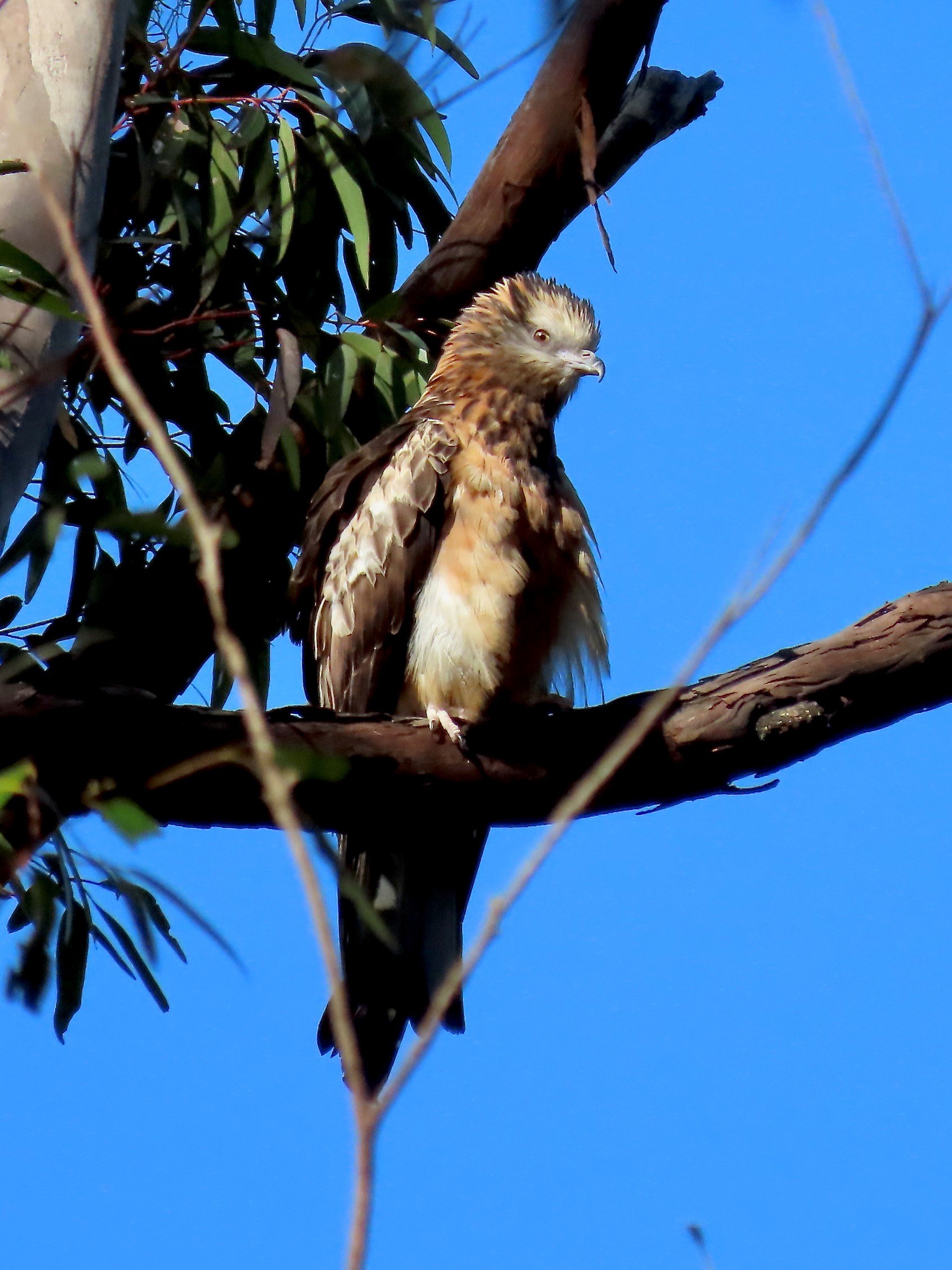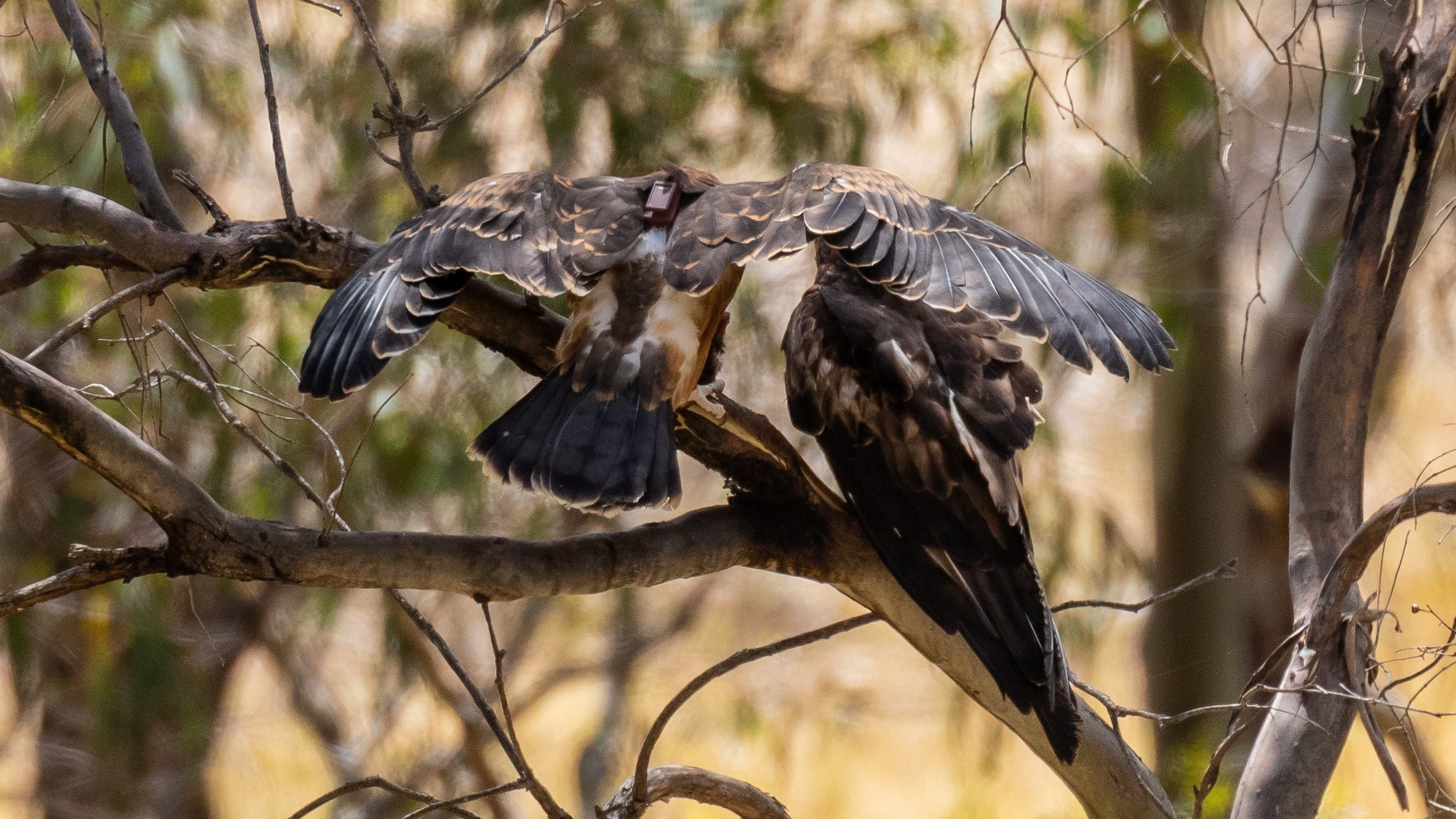A landmark project from Green Adelaide has seen satellite trackers placed on 2 square-tailed kites for the first time, in a bid to shed light on these rare birds of prey.

Two young female squared-tailed kites – nicknamed Betty and Goldie – have been fitted with satellite trackers to understand their movements and determine the habitat restoration activities that could support these local birds of prey into the future.
Over the last decade, there have been as few as 3 known square-tailed kite breeding pairs seen annually in SA.
Green Adelaide ecologist Jason van Weenen said this project, as part of Green Adelaide’s rewilding efforts, aims to better understand the characteristics of foraging habitats for the birds.
“Given the rarity of square-tailed kites in South Australia, this project will help build our knowledge of local critical habitat for the species,” Mr van Weenen said.
“Square-tailed kites are known to prefer forest and woodland areas, and satellite tracking will provide useful information on the amount and type of preferred habitat of the birds.
“As higher order predators, the presence of square-tailed kites is a great indication of a healthy ecosystem.”
The tracking project has involved extensive planning and monitoring of juvenile breeding pairs from volunteers and experts, to ensure satellite trackers were fitted at the right time to trace the birds’ movements once they leave their nests.
Mr van Weenen said the project is already providing valuable insights about these birds of prey.

“The birds did spend lots of time around their nesting area after first flying, honing their skills to become independent,” Mr van Weenen said.
“Goldie was the first to leave the nest, followed by Betty who left 2 weeks later.
“The satellite data we’re receiving is building a picture of the sort of distances the young birds are travelling.
“The data will help take some of the guess work out of where these birds spend their time through autumn and winter, when they disappear from the greater Adelaide area,” Mr van Weenen said.
This project paves the way for more trackers to be placed on the juveniles during the next breeding season from August to understand how habitat protection and enhancement could support the rare species.
Green Adelaide is leading this project to learn more about square-tailed kites, with support from raptor experts and ornithologists, volunteer observers, the Department for Environment and Water, Birds SA and local landholders.